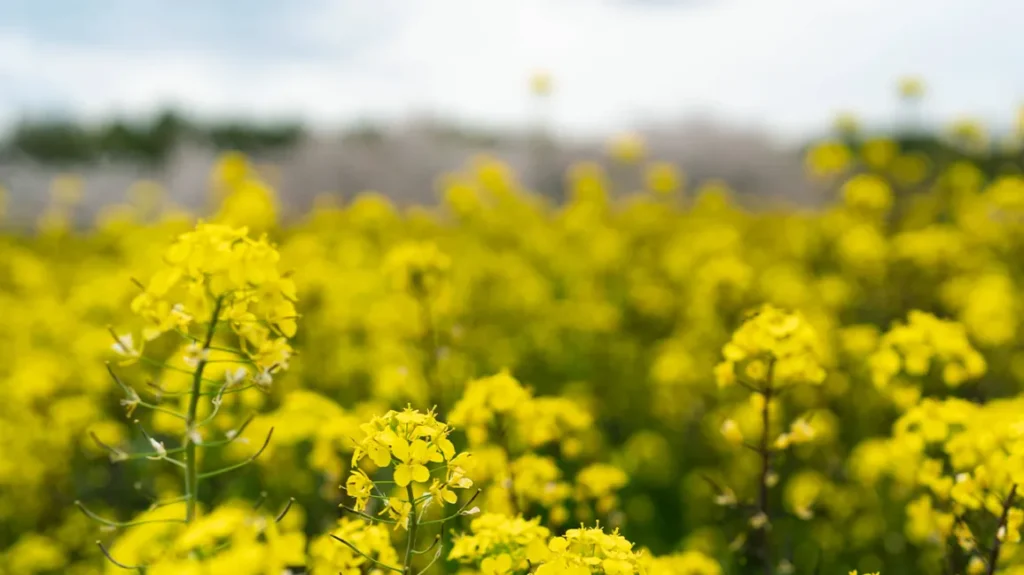In Pakistan, the agricultural sector is pivotal to the economy, and among the various crops, mustard (known as Sarso) holds significant importance. Mustard seeds are not only essential for cooking oil production but also play a vital role in the country’s culinary traditions. This blog post will delve into the current trends in the sarso price in Pakistan, the factors influencing its fluctuations, and the outlook for the future.
Understanding Sarso and Its Importance
Mustard, or Sarso, is cultivated extensively across Pakistan, particularly in the Punjab and Sindh provinces. The seeds are used primarily to produce mustard oil, a staple cooking oil in many households. Beyond its culinary uses, mustard plants contribute to soil health, making them an essential crop in sustainable agriculture.
Nutritional Value
Mustard oil is rich in monounsaturated fats and omega-3 fatty acids, making it a healthier option compared to many other cooking oils. Additionally, mustard greens (leaves) are highly nutritious, offering vitamins A, C, and K, along with essential minerals.
Current Sarso Price in Pakistan
As of 2023, the Sarso price in Pakistan has shown considerable variability. On average, the price per kilogram has ranged from PKR 150 to PKR 200, depending on factors such as market demand, seasonal variations, and production levels. Prices can differ significantly between regions and local markets, influenced by transportation costs and availability.
Seasonal Trends
Mustard is typically harvested in the Rabi season, which runs from October to March. Prices tend to spike just before the harvest due to speculation and anticipation of lower supplies. Conversely, after the harvest, prices usually stabilize or decline as fresh stocks enter the market.
Factors Influencing Sarso Prices
1. Supply and Demand Dynamics
The most straightforward factor affecting the Sarso price in Pakistan is the balance between supply and demand. If production levels are high and demand remains steady, prices tend to stabilize or decrease. Conversely, a poor harvest due to adverse weather conditions or pest infestations can lead to a spike in prices.
2. Weather Conditions
Weather plays a crucial role in agricultural productivity. Unfavorable weather, such as excessive rainfall or drought, can severely impact mustard yields. For instance, the 2022-2023 season witnessed erratic rainfall patterns, resulting in lower-than-expected yields and subsequent price hikes.
3. Government Policies
Government policies regarding agriculture can significantly influence prices. Subsidies, minimum support prices, and export regulations all play a role. For instance, if the government sets a minimum price for mustard seeds, this can provide farmers with a safety net but may also lead to higher prices for consumers.
4. International Market Trends
Pakistan is not isolated from global agricultural trends. Changes in international mustard seed prices, influenced by global supply chains and foreign demand, can impact local prices. For instance, if major mustard-producing countries like Canada or India experience reduced yields, prices may rise globally, affecting local markets in Pakistan.
5. Cost of Production
The costs associated with mustard cultivation—such as seeds, fertilizers, labor, and irrigation—directly impact Sarso prices. An increase in input costs can lead to higher prices for consumers. For instance, recent hikes in fertilizer prices have pressured farmers, which could translate into increased market prices for Sarso.
6. Market Speculation
Traders and market speculators can also influence prices. Speculation on future prices based on expected supply and demand can lead to price fluctuations. Traders may hoard stocks in anticipation of future price increases, further driving up costs.
Regional Price Variations
Prices for Sarso can vary significantly across different regions of Pakistan. In Punjab, where production is concentrated, prices may be lower due to higher supply. In contrast, in Sindh or Khyber Pakhtunkhwa, where mustard is less cultivated, prices may be higher due to limited local supply.
Historical Price Trends
Looking back at historical data, the Sarso price in Pakistan has shown a gradual upward trend over the last decade. Factors such as inflation, increased input costs, and changing consumer preferences have contributed to this trend. In the early 2010s, prices hovered around PKR 100 per kilogram, while recent years have seen prices consistently exceed PKR 150.
Future Outlook
1. Projected Prices
Analysts project that Sarso prices will continue to rise in the coming years. Factors such as inflation, rising production costs, and increasing demand for healthy cooking oils are likely to sustain this upward trajectory.
2. Sustainable Farming Practices
To mitigate the impact of rising costs and ensure consistent supply, adopting sustainable farming practices is essential. Crop rotation, organic farming, and integrated pest management can enhance yields and reduce reliance on chemical inputs.
3. Government Support and Policies
Continued government support for mustard farmers through subsidies and favorable policies can help stabilize prices. Investing in agricultural research and development will also be crucial in enhancing productivity and resilience against climate change.
4. Market Awareness
Farmers need to be more aware of market trends and pricing strategies. Implementing better storage solutions and cooperative selling strategies can help farmers gain better prices for their produce, reducing vulnerability to market fluctuations.
Conclusion
The Sarso price in Pakistan is influenced by a multitude of factors ranging from local supply and demand to global market trends. As the country grapples with agricultural challenges and economic pressures, understanding these dynamics becomes crucial for stakeholders, including farmers, traders, and consumers. By adopting sustainable practices and ensuring supportive policies, Pakistan can work towards stabilizing Sarso prices while meeting the demands of its population. As we move into the future, the importance of mustard as both a crop and a source of nutrition remains undeniable, making it essential for the well-being of Pakistan’s agricultural landscape.






More Stories
Eco-Friendly and Sustainable Senior Living Communities
Candida Support and Candida Pills: A Natural Approach to Gut Health
How to Prevent Melasma from Returning After Treatment